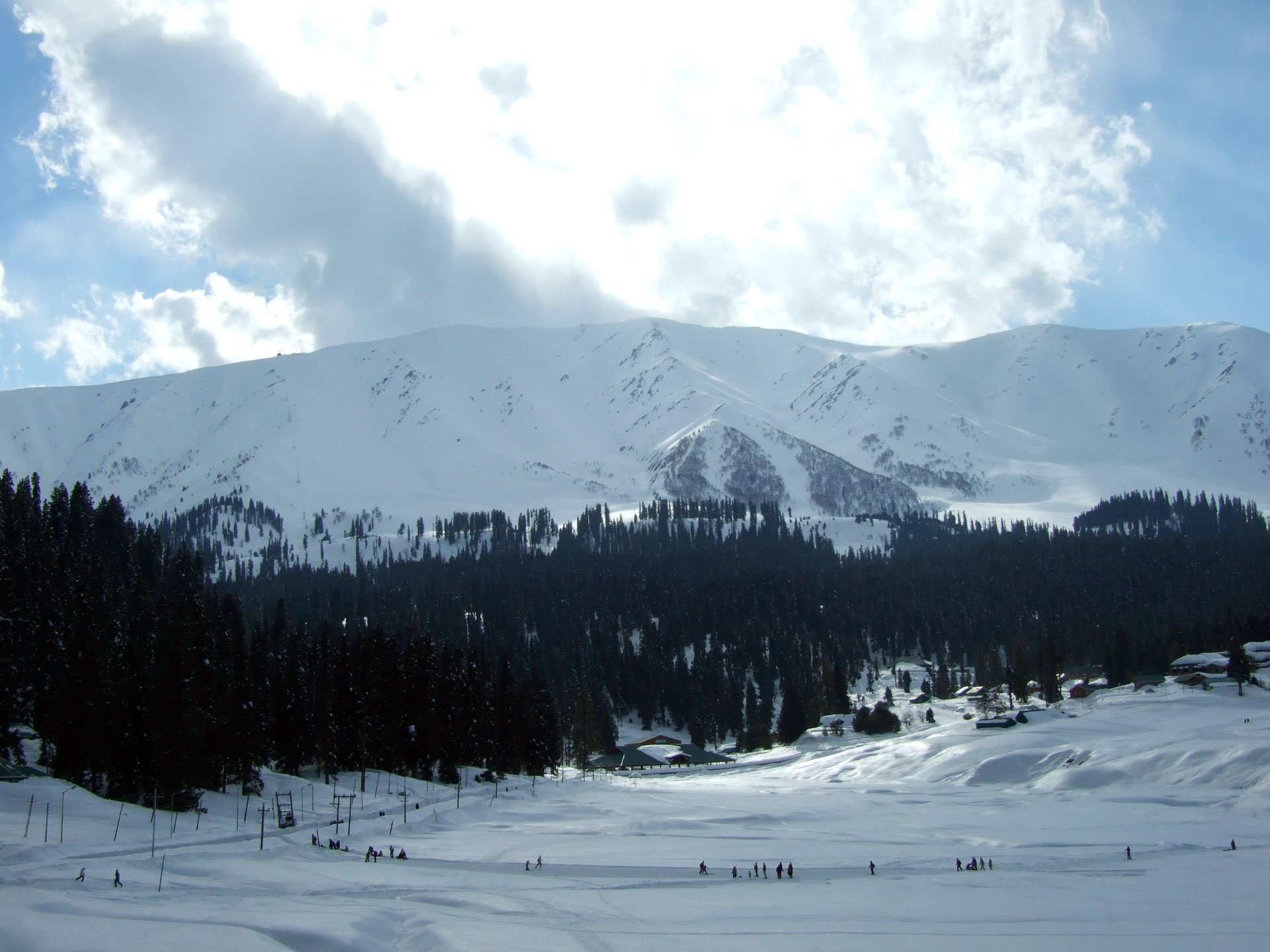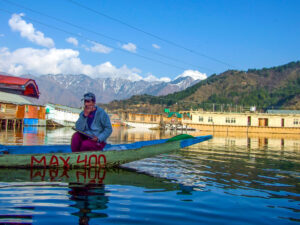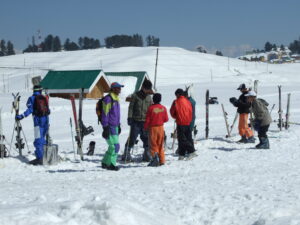Signs of revival for tourism in Kashmir

Heavy snowfall in parts of Kashmir bolstered winter tourism in January and February of 2021 (MIG Photos)
The owners of Srinagar’s famous shikaras (boats) on the equally famous Dal Lake are optimistic about the year 2021, after having spent the past two years waiting for the rare tourist who had ventured into the valley. The shikara operators hope that finally 2021 will mark a turnaround in their fortunes and lead to a revival of tourism if the trends of the past few months are an indication. “If all goes well, we might see some recovery. The last two to three months have given us some hope,” Aamir Kirmani, owner of Holiday Kashmir, a tour operator in Srinagar tells Media India Group.
Due to its location and climate, Kashmir is really a round-the-year destination, with tourists opting for the weather and landscape that suits them. The peak season for domestic tourists is of course the school vacations beginning in April and through to July when the valley transitions from blooming of tulips in the beautiful Mughal-era gardens to a bright summer, very mild by the standards of the plains and the lovely and colourful autumn when the valley turns into shades of golden and red. With the arrival of the winter, tourists seeking adventure sports or just frolicking in the snow head to the valley in huge numbers again.

Shikara operators hope that 2021 will mark a turnaround in their fortunes & lead to a revival of tourism (MIG Photos)
However, the entire industry has been on a standstill since 2019 when the central government suddenly abrogated Article 370 of the Indian Constitution, which gave special status to Jammu and Kashmir (J&K), divided it into two union territories, imposed a statewide strict curfew and cut telephone and internet services, a ban that is yet to be fully lifted.
On top of these drastic changes, with the arrival of the Covid-19 pandemic in early 2020, the tourism industry spent the entire year hibernation. It is only now that things have begun to look up for the tourism and hospitality industry as some tourists return to the valley.
Kirmani says the tourist inflow at the Srinagar airport so far this year has been encouraging. He attributes it to heavy snowfall in parts of the Valley – which bolstered winter tourism. “Snow lovers from all over the country have started coming here. They probably caught visuals of the snow on TV and social media and they packed their bags to head to Gulmarg,” he says.
“Every day 1,000-1,500 tourists are flying into Srinagar. This bodes well for the sector, considering our high season has not begun yet,” he adds.
Union tourism minister Prahlad Singh Patel says tourists visited Srinagar and Jammu in larger numbers in January as compared to the same period last year. While in January 2020, only 3,750 had visited Srinagar, this year the number shot up to 19,000. According to official figures, over 45,000 tourists have visited Kashmir in the first two months of 2021, already 3,000 more than the entire last year.
The Valley hosted over a million tourists each year from 2008-2018. Till June 2019, planes and comfort coaches carrying thousands of excited tourists would reach Srinagar every day. In the first 7 months of the year, over half a million tourists had already visited Kashmir and the tourism department was hoping that the 2016 record of 1.2 million arrivals would be broken that year. But the abrogation of Article 370 put paid to all the dreams.
Mehar Tak, who runs a small guesthouse for backpackers in the Valley and is an avid traveller herself, says that her guest-house, Sarovar, situated near the Dal Lake has been proactive in reaching out to tourists. She also networked with travel agents and the media to spread a positive message about the Valley and its beautiful landscape and to convince tourists across the country that it is a safe destination.
“I am glad to share that my guesthouse is packed. It is having a good footfall,” she adds.
She goes on to say that the snow art exhibition, winter festival and recent Khelo India Games, featuring winter sports activities, also played a part in attracting more tourists to the place.
Kirmani of Holiday Kashmir also cites two reasons behind the boom this year. As Europe and America were out of bounds due to Covid-19, Kashmir was the only choice available for the affluent class here, he says. The resumption of flights to and from Srinagar also helped a great deal, he adds.
However, he throws in a word of caution, saying while the snow-filled places like Srinagar and Gulmarg are doing well currently, tour operators like him are worried that the ongoing pandemic may surge in some parts of the country and tourism would be halted again.
Some players like Kirmani managed to sail through the difficult time with their savings, but smaller players in the industry like the shikara riders and cab drivers have been pushed to the edge.
Ghulam Nabi, 65, says he could not afford to repair his shikara this spring. He says 2019 and 2020 have delivered a severe blow to shikara owners. “There have been many days in the last 20 months when I could not earn a rupee,” he says. “It has been a struggle for survival.”
Every morning, Nabi and hundreds of shikara owners anchor their nicely decorated boats on the banks of the Dal Lake in the hope of ferrying tourists and taking home some money. Nabi lives on the backwaters of the Dal Lake with his four daughters, son and wife. “There were times when I was not sure how to buy groceries,” he says.
On average, he used to earn INR 15,000 a month, but he says he could barely make INR 3000-5,000 a month last year. “There were times when I would literally beg locals walking along the lake to take a boat ride,” he says.
However, he says that he worst is already over and he hopes to see better days in the coming months, especially with people opting to travel to domestic destinations rather than going outside the country. For thousands like Nabi, a lot depends on the current tourism season.










